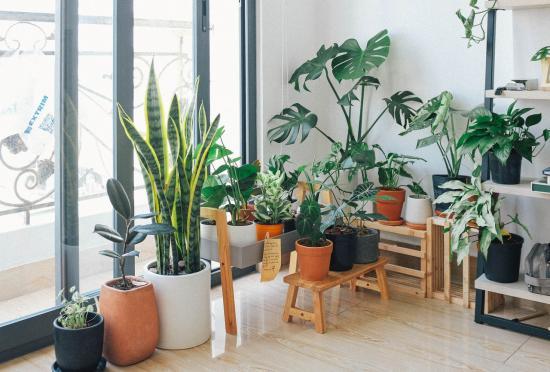12 Ways to Get Clean Air Without Chemicals
Whether you’re indoors or outdoors, the quality of the air you breathe can have a big impact on your health. Studies have tied poor outdoor air quality to lung cancer, strokes, and heart disease. In fact, air pollution causes about seven million deaths worldwide each year, according to the World Health Organization.
The air inside your home, however, can be even more polluted than the air outside, according to the Environmental Protection Agency (EPA). And research shows we spend most of our time indoors, which is all the more reason to start cleaning our indoor air.
There are myriad reasons why your indoor air can be polluted. Some sources, such as furnishings and building materials, can release pollutants more or less continuously, according to the EPA.4 Other sources, like smoking, cleaning, or renovating, release pollutants intermittently. Unvented or malfunctioning appliances can release potentially dangerous levels of pollutants indoors (which is why it’s so important to have a working carbon monoxide detector in your home). Even certain trendy and useful appliances (we're looking at you, gas stoves) are notoriously bad for air quality.
And if you think spraying scented air freshener will clean your air, think again. That scent is also a form of indoor air pollution, and most air fresheners just release more potentially harmful chemicals into your home.5 The health issues caused by those chemicals cost about $340 billion a year in treatment and lost productivity expenses, according to a study published in The Lancet.6
Read on for some tips on improving your indoor air quality without the use of chemicals.
1. Open Your Windows
It's the simplest (and cheapest!) thing you can do to improve your indoor air quality. Open your windows for even just five minutes a day to alleviate the accumulation of harmful air pollutants in your indoor air. Consider sleeping with a window cracked open at night (layer on extra blankets at night in winter) to ensure a clean air supply. Make a point of always opening windows in rooms you're cleaning; the fresh air will add to the final impression of cleanliness.
2. Spruce Up Your Decor With Houseplants
Several types of houseplants filter out common volatile organic compounds from your indoor air. Having indoor houseplants can help improve indoor air quality, according to a study published by the American Society for Horticultural Science.7 For example, spider plants are effective at reducing benzene, formaldehyde, carbon monoxide and nitrogen dioxide.8 Even NASA has weighed in on this, saying that "both plant leaves and roots are utilized in removing trace levels of toxic vapors from inside tightly sealed buildings. Low levels of chemicals such as carbon monoxide and formaldehyde can be removed from indoor environments by plant leaves alone." Check out this list of 5 houseplants for removing indoor air pollution.
3. Opt for Essential Oil Diffusers
Some essential oils, like tea tree oil, have antibacterial properties9 and can be added to homemade household cleaners or even applied topically to your skin to treat a small cut.10 But did you know these oils also can reduce airborne bacteria? Essential oils like eucalyptus, clove and lavender have been proven to help reduce the number of dust mites in your house, too.11 Learn how to make your own essential oil diffuser.
4. Opt for Beeswax Candles
Bear with me on this one, because it’ll get a little scientific. In addition to the oxygen we need for our bodies to function properly, the air we breathe also contains other gases, and some combination of various chemicals and miniscule particles.12 Many of these chemicals and particles are pollutants that pose a health risk after entering the body via the lungs. Some studies even show a link between inhalation of ultrafine particles and the development of diabetes or cancer.13
The good news is that some plants help remove these harmful pollutive elements from the air.14 Ions released by certain plants can bind to potentially harmful particles in the air and neutralize them.15 Some people argue that pure beeswax candles can help neutralize these particles in much the same way as plants, cleaning the indoor air.16 Still, more research is needed to understand whether beeswax candles can truly clean air.
It is important to note that burning any kind of candle still sends soot up into your air, so you'll still want to ensure proper ventilation in your home.
5. Take Your Shoes Off
The dirt outside can carry some really yucky stuff—pesticides, pollen, fungi, bacteria, and feces, to name a few. When you walk inside your house, any or all of that could be on the bottom of your shoes, so it’s best to take them off when you get inside or swap for a pair of slippers. It’ll help keep your air cleaner, not to mention your floors. To learn more, see 6 Reasons to Remove Your Shoes Inside.





















